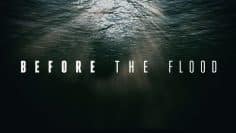A Plastic Ocean
A Plastic Ocean unveils the devastating impact of plastic pollution on our world’s oceans and marine life. Directed by Australian journalist Craig Leeson, it takes viewers on a global journey to witness firsthand the consequences of our plastic-dependent society.
The documentary begins with Leeson’s search for the elusive blue whale off the coast of Sri Lanka. However, his quest takes an unexpected turn when he encounters a vast expanse of plastic waste floating in the Indian Ocean. This shocking discovery propels Leeson and his team, including world record-breaking free diver Tanya Streeter, to embark on a four-year odyssey across 20 locations worldwide.
Throughout their journey, the filmmakers collaborate with an international team of scientists, researchers, and environmental experts to uncover the true extent of plastic pollution in our oceans. The film presents alarming statistics, such as the fact that over 8 million tons of plastic are dumped into the world’s oceans every year, with more than half sinking to the bottom.
One of the most pwerful aspects is its vivid portrayal of the impact on marine life. Viewers are confronted with heart-wrenching scenes of animals suffering from plastic ingestion and entanglement. In one particularly poignant moment, a scientist dissects a deceased seabird, revealing a stomach full of plastic debris that had caused the animal to starve to death.
The documentary highlights the pervasive nature of microplastics, tiny plastic particles that have infiltrated every level of the marine food chain. These microplastics absorb toxins and are consumed by marine organisms, eventually making their way into the human food supply. It presents evidence suggesting that these particles may have serious health implications for both marine life and humans.
A Plastic Ocean not only focuses on the environmental impact but also sheds light on the social and economic consequences of plastic pollution. The filmmakers visit communities in developing countries where plastic waste has become an overwhelming problem, showcasing the stark reality of those living among mountains of discarded plastic.
While it presents a grim picture of the current state of our oceans, it also offers hope by featuring innovative solutions and technologies being developed to address the plastic crisis. From large-scale cleanup efforts to the development of biodegradable alternatives, it demonstrates that there are ways to combat this global issue.
The film serves as a powerful wake-up call, urging viewers to reconsider their relationship with plastic and take action to reduce their plastic footprint. It emphasizes the importance of refusing single-use plastics, recycling, and supporting initiatives that aim to clean up our oceans and prevent further pollution.









